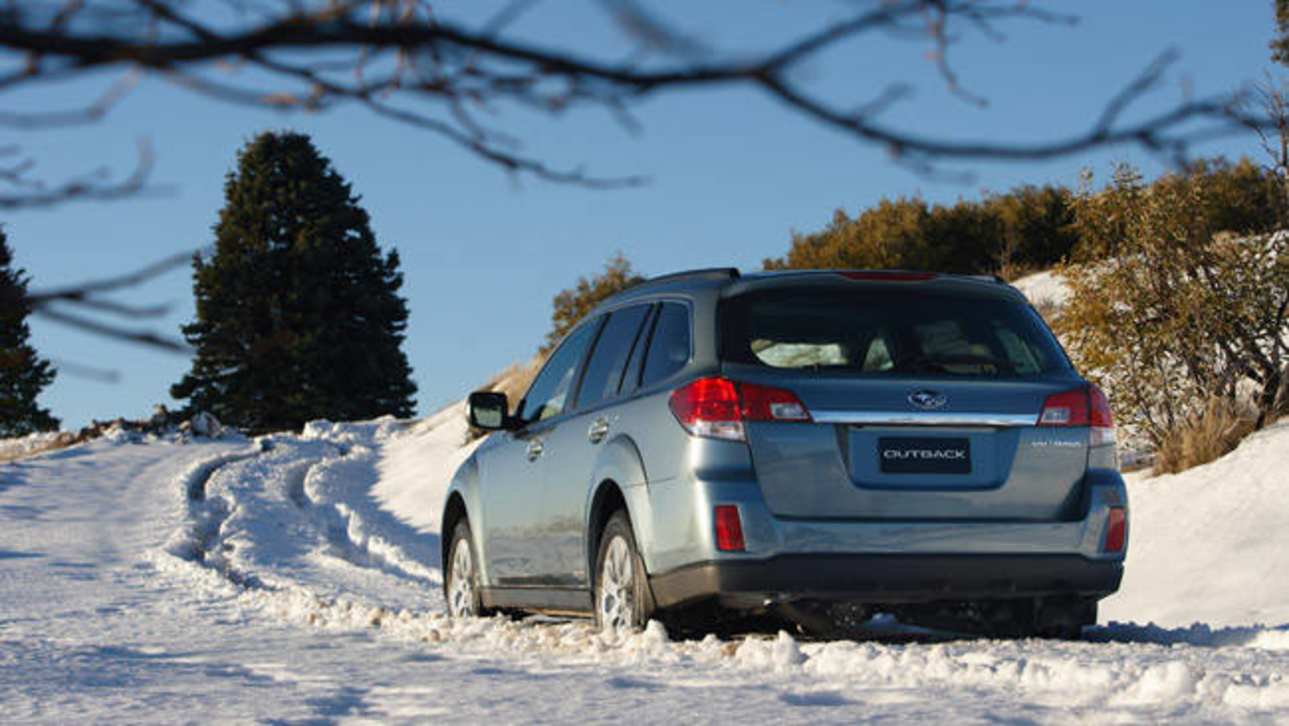AS with everything, preparation is the difference between enjoying a great time at the snow or experiencing a holiday from hell. The RACV rescues up to 300 motorists during the ski season just around the Mansfield region near Mount Buller, so it pays to check your car out before you hit the slopes.
Poorly prepared vehicles, speeding and a failure to treat the icy conditions with respect are the main problems.
Cold conditions put more strain on the car's electrical and cooling systems, while tyre grip and visibility are reduced. carsGuide has put together a check-list for the snow.
Battery
Most modern cars have sealed-for-life batteries that tend to provide little sign that they are low on charge. Cold weather affects battery performance so it is important to check your battery before you head to the snow. If in doubt change over for a new one.
Black Ice
Do not be deceived by those great looking alpine photos of a road snaking its way through the white stuff. Even when cleared snow roads present some unseen dangers like black ice. Black ice is deadly and drivers usually hit it before they even realise that something is wrong.
If you do hit a slippery section of road do not panic. Let the car slow down, change down a gear and do not brake suddenly or yank the steering wheel. Black ice can be found in shady areas when there sun doesn't shine. Like normal roads, maintain an appropriate distance from the vehicle in front.
Chains
Chains are compulsory on all vehicles in Victoria, including four-wheel drives, but are only required on two-wheel drive vehicles in NSW even though the NSW RTA recommends all vehicles carry them. If it is snowing there will be advisory signs on the road to fit chains at appropriate spots. Check your owners' manual if you drive a four-wheel drive or all-wheel drive vehicle.
Depending on the vehicle chains might need to be fitted to all wheels or just the front or rear wheels. Importantly practice fitting your chains before you head to the snow and keep a spare pair of old canvas gardening gloves handy to fit them. After fitting them, drive a few hundred metres and then recheck the tension of the chains. Loose chains can damage wheels and mudguards.
Fuel
Diesel vehicles are the No1 choice for serious off-roaders and are becoming more popular among buyers who opt for "lifestyle" four and all-wheel drive cars. If you plan to spend time in the snow fill up with what's called alpine diesel or "winter mix diesel". It is available closer to the resorts in Victoria and southern NSW. Service stations in and around resorts usually carry it.
Alpine diesel has a lower freezing point and additives to stop the fuel system waxing up. It is best to blend it into your tank before you hit the slopes.
Parking
PARK in the designated areas at your destination. Depending on the resort, it is best to reverse park with your vehicle pointing out on to the road. If there is a heavy snowfall digging your vehicle out will be easier. It is important to put the car in gear with the handbrake off. If you do accidently leave the handbrake on it can freeze in position, locking the brakes.
Radiator
Like the battery, the radiator can be forgotten in the eagerness to get to the snow and have fun. It is important to make sure you have the right anti-freeze additive in the radiator. Many newer cars already have a measure of anti-freeze and it is worthwhile checking the owners' manual again to make sure what is recommended.
Spare Tyre
If you don't know how to change a tyre now is the right time to learn. Know how to get the tyre out, what tools to use to change it and above all, make sure the tyre is inflated to the correct pressure. It's easy to forget the spare when you spend most of your time in town.
If your car has a spacesaver that is limited to 80km/h, observe this maximum advised speed. Carrying an old bag large enough for the spare will also prevent it dirtying the luggage area.
Wipers
These fall into the same category as the battery and radiator. If they do not work effectively replace them. It is handy to have a plastic scraper to get ice off the windscreen.
Starting the car and using the heater or climate control will get any remaining snow off the windows. Do not pour boiling water over the windscreen to clear it. The sudden change in temperature could crack the glass. A collapsible snow shovel is handy for clearing around the car if it has been parked for a long time.


.jpg)


.jpg)

 copy.jpg)
.jpg)
.jpg)


.jpg)






Comments